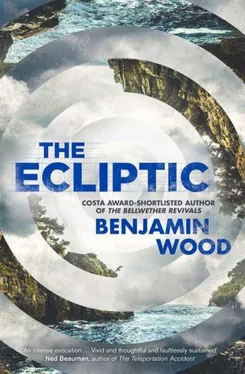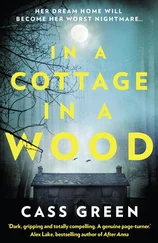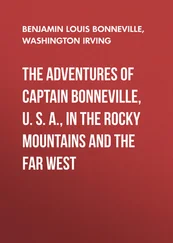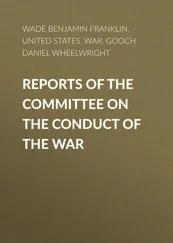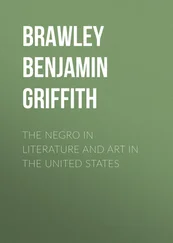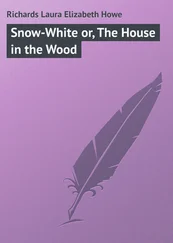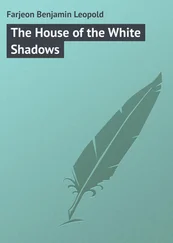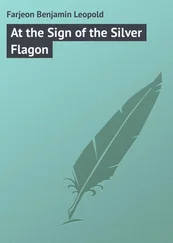My brain was not geared to understand the complexities of the science, but I delighted in reading more about the history of astronomy. I grew fascinated by its importance as a means of navigation. In the age of sail, accurate maps of the stars were vital to aid the passage of ships at sea (I read somewhere that this was the sole reason for the appointment of John Flamsteed as Britain’s first Astronomer Royal). This relationship between the stars and the oceans reverberated with me. In spite of my experiences aboard the Queen Elizabeth , I had not lost any affection for Melville and Stevenson or the cheap pirate adventure novels I remembered from my youth.
I moved my research to the National Maritime Museum and taught myself about the early instruments of navigation: the astrolabe, the sextant, the back staff, the nocturnal. It seemed for a time that I would include data from old nautical almanacs in my drawings, too, but I could not bring these ideas to a resolution. Then, one afternoon, I chanced upon a compendium of sail-plans and diagrams for merchant sailing ships in the museum bookshop. They were not from the same period as the Jamieson atlas, but there was a clear similarity between these precise designs (made by naval architects to determine the structure and placement of ships’ sails) and the star charts I had studied at Burlington House. In the sail-plans, key points of the ship’s rigging were numbered and connected by solid or broken lines, in much the same way that the gridlines of the celestial sphere were drawn out by Jamieson. I noticed clear parallels and overlaps. When I traced the sail-plans in the studio and laid them directly on top of my copied star charts, the natural cohesion of the images excited me.
I completed the drawings for Paul Christopher over the next few days. I proposed a mural eight feet high by fourteen wide, depicting a scrapyard for old sailing vessels, seen from various perspectives — a junkpile of merchant sailing ships arranged at curious angles, filling the entire space. I plotted these ships against a chart expanded from Jamieson’s atlas so that the junctures of their sails and rigging correlated with the patterns of the stars. I posted the drawings to Christopher & Partners, expecting I would not hear back for at least a fortnight, but he called the very next morning to tell me how much he admired them. The commission was finalised, and I was set a deadline of late September to complete the work, with an extra week for installation and final touches.
I went about the task of painting the mural so methodically. First, I divided my master drawing into one-inch squares with construction lines. Then I made a cartoon — a kind of knitting pattern, drawn on paper to enlarge the master sketch. This was organised into corresponding one-foot squares, helping me retain the proportions of the original. Transferring the design from the cartoon involved puncturing its drawn outlines with my roulette — a small spiked wheel on a wooden handle — and then dusting the perforations with dry poster paint, leaving behind a dotted imprint on the stretched cotton canvas that I could firm up with ink. I underpainted each square using oil pigments thinned right down with turpentine, building thicker coats upon it as the days progressed. It was important to graduate from light to dark so that the image would retain its punch and definition.
My aim was to finish most of the work by July to give the paint and resin enough time to settle, as I was going to have to roll the canvas up and transport it to the observatory in a cardboard tube — it was a five-hour drive, north to Windermere, and the longer the painting stayed on the roll, the harder it would be to install. I planned to affix the final image to the wall with lead adhesive in three separate sections, using the techniques I had learned from Henry Holden. Everything seemed to be in place.
But I was barely halfway into painting when I noticed a problem with the master drawing I was working from. In all of Jamieson’s celestial charts, two elements were persistently shown in the form of solid, candy-striped lines. The first of these represented the equator. The second was marked: ECLIPTIC. I intended to present these lines as frayed lengths of rope, arcing from right to left. But, just as I was about to start committing them to paint, I hesitated. It occurred to me that, in my great rush to finish the mural plans, I had not stopped to query the significance of these lines in Jamieson’s originals. So I went to get my dictionary (I kept it in my bedside drawer in place of a Bible).
equator / ih-kway-ter / noun
an imaginary line around the earth at equal distances from the poles, dividing the earth into northern and southern hemispheres.
This just confirmed what I already knew. It was school-level astronomy.
ecliptic / ih-klip-tick / noun
a great circle on the celestial sphere representing the sun’s apparent path among the stars during the year.
I was more curious about this definition. ‘Representing’ and ‘apparent’ seemed like oddly vague descriptors, and left me feeling quite unsatisfied. The next day, I went back to Burlington House to consult their reference books.
The ecliptic is an imaginary great circle on the celestial sphere along which the sun appears to move over the course of the year. (In actuality, it is the earth’s orbit around the sun that causes the change in the sun’s apparent direction.) The ecliptic is inclined from the celestial equator by 23.5 degrees, and crosses it at two points, known as equinoxes. The constellations of the zodiac are positioned along the ecliptic.
I went to see if the librarian could expound on this for me. She did not understand the definition herself (‘I’m part-time here,’ she said, ‘and I only studied Classics’), but advised me to speak to the archivist, who would be coming back shortly from lunch. And so I sat patiently in the reading room for over an hour until the man appeared. He had helped me on several occasions before, and I always thought that he looked much too young to be an archivist; it seemed that wearing a lot of tweed and brilliantine was his strategy for disguising it. He went to find himself a text from the shelves. As I approached him, he took off his round wire frames and gently closed his fist over them. Raising one corner of his mouth, he said, ‘Who told you?’
‘Pardon me?’
‘Who told you I could help?’
‘I’m sorry. The librarian thought—’
‘She knows . I told her fifty times. It’s my day off.’
‘Oh. Then why are you here?’
‘Because I’m trying to do some research of my own.’
‘Snap,’ I said. ‘I didn’t mean to disturb you.’
‘It’s all right, it’s all right.’ He sighed. ‘You might as well have a seat. I can take a few minutes out of the tedium, I suppose.’
‘You’re very kind,’ I said. ‘Thank you.’
There was an uncomfortable moment in which I thought he sniffed my hair as I sat down at the nearest table, but it was only his peculiar way of breathing. ‘Excuse my hay fever,’ he said, standing over me. ‘Tell me what you need.’
I laid out the reference book, pointing to the extract I wanted him to clarify. He leaned in, placing a hand at the back of my chair. ‘What I don’t understand,’ I said, shifting away, ‘is how the line is imaginary.’
‘It’s imaginary in the same sense as the equator and the celestial sphere,’ he replied. ‘Simple.’
I blinked back at him.
‘Oh dear. You’d better shift over.’ Wearily hooking his glasses back on his ears, he sat down in the space beside me. He turned back his sleeves. ‘All right. Astronomy for naïfs, lesson one. The celestial sphere.’ He talked very quickly and flatly, as though dictating a letter: ‘The way we envision the stars is by imagining they’re attached to a giant invisible sphere surrounding the earth. It’s a total fiction, really — just a construction we came up with to help us get our heads around the complexity of it all. And, of course, we can only see half of this sphere at any given time. So, you could say it’s more like a dome, or a semi-sphere, but we prefer not to call it that. Our prerogative. Anyway—’ He tapped the page: one heavy clop of his index finger to get my attention. ‘The ecliptic, put simply, is the plane of the earth’s orbit around the sun. But since we all live here on earth, we observe the sun to be moving along this plane instead. Why? Because what would be the point of looking at things from the perspective of the sun? That’s no use to anyone. And it’s important to have a governing system.’ He nudged closer, wetting his lips. ‘Ergo, it’s an imaginary circle, as it’s only a part of our human construction of the cosmos. To call it a genuine circle would be quite incorrect. But to avoid confusion, we say that the sun moves in a circular path through the stars over the course of the year. We can observe it going eastwards through the constellations along a sort of line. That line is what we call the ecliptic. It’s not actually there, of course. In fact, it’s a complete inversion, because it’s really the earth that’s moving, not the sun. But to all intents and purposes, it’s a bloody great circular line in the sky made by the sun throughout the year.’ His brow was crumpled now. ‘It seems I’m quite incapable of explaining this succinctly. Shall I draw you a picture?’
Читать дальше
